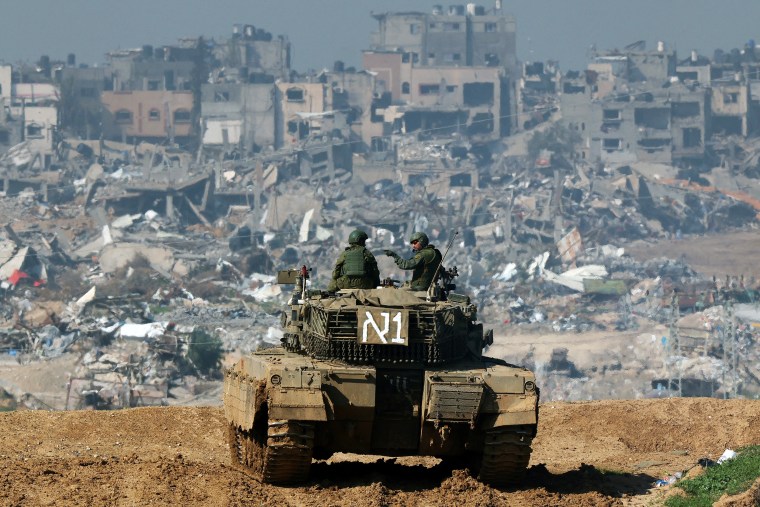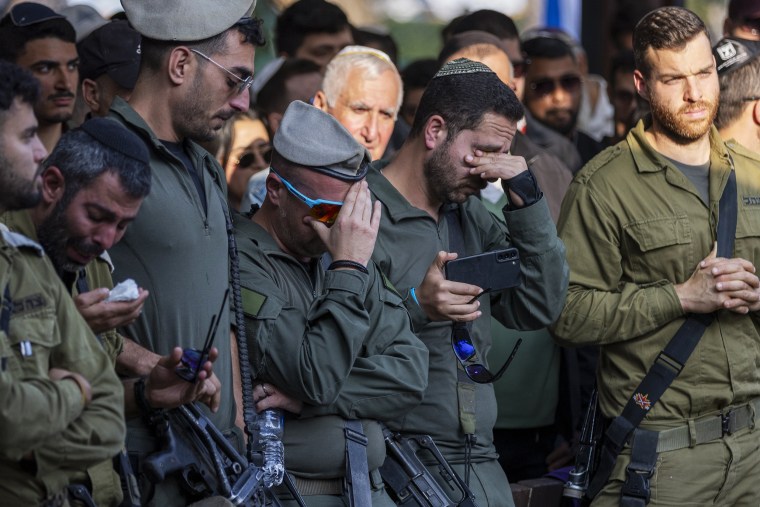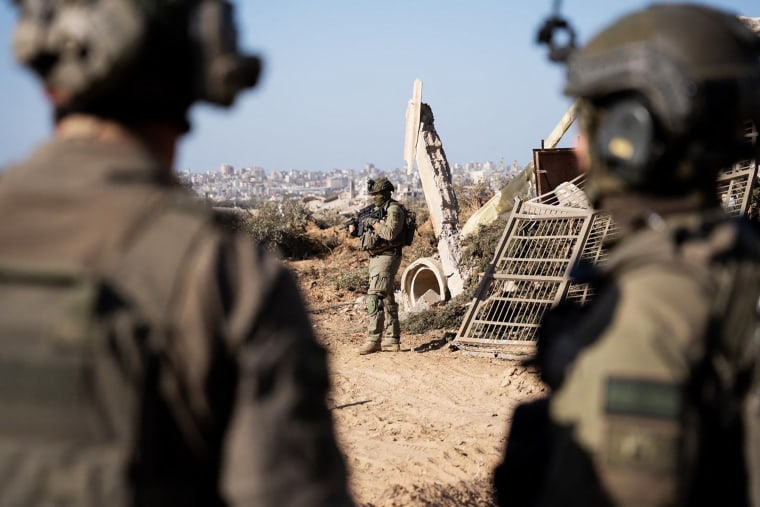TEL AVIV — The explosion could be heard across central Gaza.
As they got ready to destroy a Hamas facility used to build rockets, Israeli combat engineers were busy lining the site with explosive charges, making final preparations for a controlled detonation.
And then, according to a statement from the Israel Defense Forces, a nearby tank crew, believing it had spotted Hamas fighters, opened fire. The shell toppled an electricity pole, which fell and triggered the explosives.
Six soldiers were killed and 14 were injured in the explosion on Jan. 8, the IDF said, after television crews inside Gaza captured two gray plumes of smoke towering over the Bureij refugee camp.
Their deaths were the latest in a string of friendly fire incidents and accidents that have killed Israeli soldiers since Hamas’ Oct. 7 attacks.
Out of 170 Israeli soldiers killed in Gaza last year, 29 were either shot by fellow soldiers or died in accidents, according to the latest available IDF data. That means nearly 1 in 5, or 17%, of all Israel’s losses have come not at the hands of Hamas but from mishaps on its own side. Most countries do not release data on friendly fire deaths, meaning Israel faces added scrutiny.
“That is a high rate of friendly fire, even given that it’s occurring in very dense urban terrain,” James Stavridis, a retired U.S. Navy admiral and the former supreme commander of NATO forces, said in an interview. “I think the Israelis will be looking very hard at each of these incidents to try and draw the lesson learned and reduce that level of friendly fire.”
Incidents of friendly fire, sometimes referred to as “fratricide,” have long been reported, dogging even the world’s most highly trained militaries. The U.S. Naval War College found in a 1999 study that “cases of fratricide have tended to rise along with the advancement in technology,” as militaries strike targets from ever-greater distances without always being able to tell friend from foe.

Asked about the fratricide rates in the current war with Hamas, the IDF’s main spokesperson, Rear Adm. Daniel Hagari, said it was “a horrible thing.”
Israeli forces are operating in especially difficult circumstances in Gaza, where Hamas fighters disguise themselves as civilians and use their vast network of tunnels to pop up and launch ambushes, he said. “We are learning from every event and doing our lessons learned in order to minimize these horrible accidents,” he added.
A separate IDF investigation concluded that conditions in Gaza helped to explain one of the war’s most notorious incidents of mistaken identity.
When three Israeli hostages, Alon Shamriz, 26, Yotam Haim, 28, and Samer Talalka, 24, were killed after they emerged from a building in Gaza, shirtless to indicate they had no weapons or explosives and carrying a makeshift white flag, anger ignited the country.
But the investigation concluded that the soldiers “carried out the right action to the best of their understanding of the event at that moment,” although the incident “could have been prevented.”
Human rights groups said the killing of the hostages points to a broader endemic practice of Israeli troops’ opening fire without due care, with Palestinian civilians in Gaza paying the highest price.
“The three hostages were killed like this, but we got a glimpse into the way we’re fighting in Gaza and the rules of engagement when it comes to Palestinians,” said Avner Gvaryahu, the executive director of Breaking the Silence, a nongovernmental organization that collects testimonies from Israeli soldiers about their military service.
More than 25,000 people have been killed in Gaza since Israel launched its military assault, according to the enclave’s Health Ministry.
‘Freak accident’
On a chilly evening last week, dozens of civilians and a handful of soldiers gathered under a white tent set up outside a home in the central Israeli city of Hod HaSharon. Platters of food were set up on a table, and whisky was poured into plastic glasses.
The crowd had gathered for the shiva, the traditional Jewish mourning period, for Capt. Ron Efrimi, 26, one of the six soldiers killed in the rocket factory explosion in Gaza.
“I was in his light, not in his shadow,” said his younger brother, Omri, recalling a lifetime of being referred to as “little Efrimi” by teachers and coaches. The two brothers rejoined the reserves and served in Gaza after the Oct. 7 attacks.
Hours before military officials arrived at the home to deliver the news of Ron’s death, Omri said, the family had been stunned to catch a glimpse of him on Israeli television news. Although he was wearing a mask, they immediately recognized him as reporters interviewed him.

Omri, who served as a tank commander, said he did not blame the crew that fired the round that killed his brother. “I think I would do the same thing,” he said, adding that it was the tank’s responsibility to protect the engineers.
“It’s a very freak accident,” he said, not human error. And even if it was human error, “I will hug the men that made the mistake, because I can understand the pressure,” he said.
Stavridis, the retired admiral, said the key to avoiding friendly fire is ensuring communication among different units — infantry, tanks, artillery aircraft — operating with Gaza’s narrow confines.
After it was caught off guard on Oct. 7, Israel mobilized more than 300,000 reservists, some of whom had not served in active duty in years. “Israel did not have the time to take that invading force that was going to go into Gaza and practice and rehearse,” Stavridis said.
He added that senior officers on the ground need to constantly remind troops not to rush during combat.
“That sounds counterintuitive, but once you fire that weapon, that bullet is not coming back,” he said.
